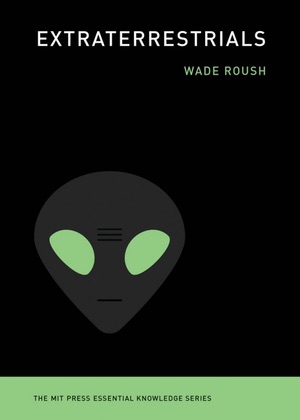Review: Extraterrestrialsby Jeff Foust
|
| “Worlds with very different histories will be home to very different beings, so perhaps it’s time to reformulate SETI to account for a much broader range of possible targets,” he writes. |
That paradox, of a seemingly fecund universe but one that lacks signs of intelligence, is at the core of Extraterrestrials by science writer Wade Roush, part of an “Essential Knowledge” series by MIT Press that offers concise overviews of a wide range of topics. That paradox is not a new one, of course, dating back seven decades to a lunchtime conversation at Los Alamos where physicist Enrico Fermi famously asked, “Where are they?” The Fermi Paradox seems more, well, paradoxical than ever, given what we know about the potential for life to exist beyond Earth.
A paradox, Roush notes, is based on a set of “seemingly sound premises” that together create a contradiction. For SETI, Roush says there are three such premises: that astrophysics and biology show that there should be plenty of extraterrestrial civilizations, that those civilizations should have had time to expand through the galaxy, and that there are no signals or other evidence of such civilizations. The emphasis, though, is on seemingly sound premises. Which one, or ones, is flawed?
After using the first half of the book to explore the history of SETI, from the ancient Greek concepts of a “plurality of worlds” to modern-day efforts, Roush tackles those premises of the paradox in the second half. It’s possible, he writes, that there is a “Great Filter” somewhere along the Drake Equation for estimating the number of technological civilizations in the galaxy. But as we learn more about the existence of other solar systems and potential habitable exoplanets, any such filter must be further along in the chain, such as the lifetime of such civilizations—a portent for our own. Or, perhaps, other civilizations don’t transmit or travel in ways we would, or at least in ways we could identify. And then there’s the possibility that we simply haven’t done a thorough enough search to find the signals of other civilizations that are out there: one SETI pioneer, Jill Tarter, likened the null result to date to concluding the ocean is devoid of fish after scooping up a single glass of water from it.
Roush examines each in course, and comes away still optimistic that there are other civilizations out there. Perhaps, he concludes, they are simply too far away to detect (or for them to detect us), or that they communicate in ways we don’t recognize. Or both. He concludes that SETI, whose general approach has changed little since Project Ozma six decades ago despite advances in astrobiology and astrophysics, is due for some new approaches. “Worlds with very different histories will be home to very different beings, so perhaps it’s time to reformulate SETI to account for a much broader range of possible targets,” he writes.
While much of the background information about SETI and astrobiology in Extraterrestrials will be familiar to readers, Roush’s examination of the paradox and its potential solutions is enlightening, even if some will debate his conclusions.
As for SETI@home, the project team at the University of California Berkeley say they’re now going to complete the analysis of all the data and write a paper about it. “We hope that other UC Berkeley astronomers will find uses for the huge computing capabilities of SETI@home for SETI or related areas like cosmology and pulsar research,” they wrote in the announcement of the project’s end. If it does restart some day, it’s likely many people will still be interested in helping a new SETI effort and trying to resolve that paradox.
Note: we are temporarily moderating all comments submitted to deal with a surge in spam.
